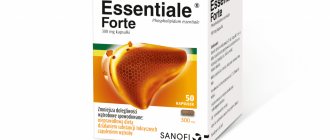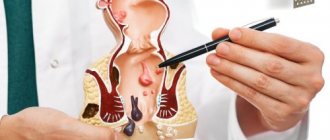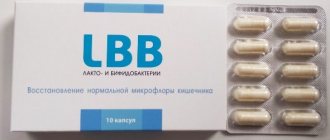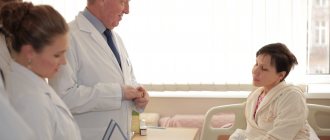- Compound
- How does lignin affect the body?
- For what diseases is taking lactofiltrum indicated?
- Causes and signs of dysbiosis
- How to take the drug correctly?
- Dosages for intestinal dysbiosis and bacterial vaginosis
- Lactofiltrum for problem skin
- Is it possible to take Lactofiltrum during pregnancy?
Lactofiltrum is a drug that is used in the treatment of gastrointestinal diseases. The composition of the product includes lactulose and hydrolytic lignin. The drug is available in tablets and sold through pharmacy chains without a prescription. How to take lactofiltrum for adults and children, for what diseases it is effective and who should refrain from taking it - we will tell you in this article.
Pharmacological properties:
The pharmacological effect of the drug is due to the properties of the active components - lignin and lactulose.
Hydrolytic lignin is a natural enterosorbent consisting of hydrolysis products of wood components, has high sorbing activity and a nonspecific detoxification effect. Binds in the intestines and removes from the body pathogenic bacteria and bacterial toxins, medications, salts of heavy metals, alcohol, allergens, as well as excess of certain metabolic products, including bilirubin, cholesterol, histamine, serotonin, urea, and other metabolites responsible for the development of endogenous toxicosis.
Non-toxic, not absorbed, completely eliminated from the intestines within 24 hours.
Lactulose is a synthetic disaccharide, the molecule of which consists of galactose and fructose residues. Lactulose is not present in the stomach and upper intestines; absorbed and not hydrolyzed. Lactulose released from the tablets in the large intestine as a substrate is fermented by normal intestinal microflora, stimulating the growth of bifidobacteria and lactobacilli. As a result of the hydrolysis of lactulose in the large intestine, organic acids are formed - lactic, acetic and formic, which suppress the growth of pathogenic microorganisms and consequently reduce the production of nitrogen-containing toxic substances. The described process leads to an increase in osmotic pressure in the lumen of the large intestine and stimulation of peristalsis.
The complex effect of the drug is aimed at normalizing the microbiocenosis of the large intestine and reducing the intensity of endogenous toxic conditions.
The use of the drug in complex therapy of bacterial vaginosis (vaginal dysbiosis) leads to an increase in the effectiveness of therapy, including an increase in the number of lactobacilli in the vagina, as well as effective suppression of the growth of opportunistic flora.
Compound
The active components of lactofiltrum are lactulose and hydrolytic lignin. Lactulose (Lactulosum) is an artificially created lactose-based compound. When lactulose enters the gastrointestinal tract, it has a laxative effect on the intestines. The substance is not absorbed by the mucous membrane, but is only broken down by intestinal bacteria in the colon. This reduces the absorption of water in the intestines, helps soften stool and normalize stool. Products containing lactulose also help improve intestinal motility. The therapeutic effect occurs 1-2 days after taking the drug.
Lignin is a naturally occurring polymer found in plants. It is contained in the intercellular space and cell walls, holding cellulose fibers together. The substance performs the same function in plants as chitin does for insects. Thanks to lignin, tree stems and trunks acquire the necessary rigidity and mechanical strength, which allows them to withstand environmental factors. Lignin contains coloring substances that give wood its natural color.
In nature, lignin is as common as cellulose. The record holder for the amount of lignin is coniferous wood. It contains up to 38% of this substance. In deciduous trees it is slightly less - up to 25%. The source of lignin is also the stems of cereal plants, which consist of 20% of this natural polymer.
Directions for use and dosage:
Orally, if necessary, after preliminary crushing, with water, an hour before meals and taking other medications.
For intestinal dysbiosis:
- adults and children over 12 years old – 2-3 tablets 3 times a day,
- children from 8 to 12 years old – 1-2 tablets, 3 times a day,
- children from 3 to 7 years old – 1 tablet, 3 times a day,
- children from 1 year to 3 years – ½ tablet, 3 times a day.
For bacterial vaginosis (vaginal dysbiosis):
2 tablets 3 times a day.
The average duration of treatment is 2-3 weeks.
Long-term use of the drug and repeated courses of treatment should be carried out only on the recommendation of a doctor.
How does lignin affect the body?
For the production of medicinal and veterinary drugs, fertilizers and other types of products, hydrolytic lignin is used, which is obtained from plant raw materials. Externally it is a powder. In the Laktofiltrum preparation, this ingredient acts as a sorbent. Unlike pectins and starches, the substance does not dissolve in water. Cellulose has the same properties. Once in the intestine, hydrolyzed lignin is not digested. Like other insoluble fibers, it retains its original structure all the way through the digestive system.
It was once believed that insoluble dietary fiber, also called fiber, did not provide any benefit to the body. They pass through the digestive tract unchanged and practically do not participate in energy exchange. Scientists called such substances ballast, thereby emphasizing their so-called uselessness. In industrial food production, manufacturers used technologies that made it possible to purify plant materials from dietary fiber. It was believed that this approach allows us to obtain products of higher quality and healthier for the body.
Opinion on this issue changed only in the 60s of the last century thanks to the Irish doctor Denis Burkitt. Working in one of the poorest African countries, this specialist noticed that local residents were much less likely to have cardiovascular diseases, diabetes, and constipation. Mr Burkitt suggested it was due to diet. Due to low income, the diet of local residents consisted almost 100% of local products of plant origin: cereals, vegetables, fruits, nuts. They are the main source of fiber.
These facts prompted Denis Burkitt and other specialists to begin a large-scale study that would answer the question of how lignin and other dietary fibers act on the body. At different times, research was carried out by scientists from universities in Northern Ireland, China, and Spain. During the events, we managed to obtain a lot of important and useful information:
- Regular consumption of dietary fiber reduces the risk of developing colon and ovarian tumors.
- Fiber helps normalize blood pressure.
- Lignin and other dietary fiber help normalize stool and get rid of constipation, which negatively affects the entire body.
- Fiber binds and removes toxins and cholesterol from the body.
- When consuming ballast substances, fluctuations in blood glucose become smoother, which reduces the risk of developing diabetes.
- Fiber is a prebiotic, that is, it has a positive effect on the intestinal microflora and creates favorable conditions for the proliferation of beneficial bacteria. Dietary fiber helps restore normal intestinal microflora after treatment with antibiotics, eliminates dysbiosis, improves intestinal motility and helps maintain good intestinal function.
- Fiber creates a feeling of fullness and fills the stomach. This product is useful for people who control their body weight and adhere to a diet.
- Dietary fiber allows you to remove toxins, harmful compounds and microbes from the body. This has a positive effect on appearance and well-being, and helps improve skin condition.
After numerous studies, no one has any doubt about the benefits of lignin and other dietary fiber. The norm of their daily consumption, according to the recommendations of the Ministry of Health of the Russian Federation, is 20 grams. Nutrients can be obtained not only from foods of plant origin, but also from dietary supplements and medications.
How to take Lactofiltrum for weight loss
Taking the drug helps a little to cope with excess weight. You shouldn’t expect miraculous results, but a couple of extra pounds will definitely disappear. The weight lost will be nothing more than harmful substances accumulated in the body, which will be eliminated from the body as a result of the effects of the medicine.
The fat deposits will remain in place; the product will not have any effect on them. If taking the drug is supported by proper and healthy nutrition, as well as an active lifestyle, then this problem can be successfully dealt with. But you should not overdo it with physical activity; the amount should be kept to a minimum, otherwise there is a possibility of discomfort in the intestines.
Using the product allows you to normalize stool and improve the functioning of the stomach. All this together has a positive effect on the state of the intestinal microflora. If the main purpose of use is to lose weight, then the course of administration is as follows: for 14 days, take 3 tablets three times a day. If a person suffers from diabetes mellitus and experiences frequent constipation, then the use of the product should be discontinued.
Lactofiltrum: instructions for use
INSTRUCTIONS
on the medical use of the drug
Lactofiltrum®
Registration number: LSR-008904/08
Trade name of the drug:
Lactofiltrum®
International nonproprietary name or chemical (group) name of the medicinal product:
lactulose + hydrolytic lignin
Dosage form:
pills
Composition per tablet
Hydrolyzed lignin (in terms of dry matter) 355 mg, Lactulose (in terms of 100% matter) 120 mg
Excipients:
croscarmellose sodium 20 mg, magnesium stearate 5 mg, microcrystalline cellulose to obtain a tablet weighing 550 mg
Description:
Capsule-shaped biconvex tablets of dark brown color with white-gray inclusions with a score.
Pharmacotherapeutic group:
enterosorbent
ATX Code:
A07BC
Pharmacological properties:
The pharmacological effect of the drug is due to the properties of the active components - lignin and lactulose.
Hydrolytic lignin is a natural enterosorbent consisting of hydrolysis products of wood components, has high sorbing activity and a nonspecific detoxification effect. Binds in the intestines and removes from the body pathogenic bacteria and bacterial toxins, medications, salts of heavy metals, alcohol, allergens, as well as excess of certain metabolic products, including bilirubin, cholesterol, histamine, serotonin, urea, and other metabolites responsible for the development of endogenous toxicosis.
Non-toxic, not absorbed, completely eliminated from the intestines within 24 hours.
Lactulose is a synthetic disaccharide, the molecule of which consists of galactose and fructose residues. Lactulose is not present in the stomach and upper intestines; absorbed and not hydrolyzed. Lactulose released from the tablets in the large intestine as a substrate is fermented by normal intestinal microflora, stimulating the growth of bifidobacteria and lactobacilli. As a result of the hydrolysis of lactulose in the large intestine, organic acids are formed - lactic, acetic and formic, which suppress the growth of pathogenic microorganisms and consequently reduce the production of nitrogen-containing toxic substances. The described process leads to an increase in osmotic pressure in the lumen of the large intestine and stimulation of the peristaltic.
The complex effect of the drug is aimed at normalizing the microbiocenosis of the large intestine and reducing the intensity of endogenous toxic conditions.
The use of the drug in complex therapy of bacterial vaginosis (vaginal dysbiosis) leads to an increase in the effectiveness of therapy, including an increase in the number of lactobacilli in the vagina, as well as effective suppression of the growth of opportunistic flora.
Indications for use:
Disorders of the intestinal microflora (intestinal dysbiosis), including as a result of antibiotic therapy; in complex therapy of irritable bowel syndrome, hepatitis and liver cirrhosis; allergic diseases (atopic dermatitis, urticaria), bacterial vaginosis (vaginal dysbiosis).
Contraindications
Individual intolerance to the drug, intestinal obstruction, gastrointestinal bleeding, galactosemia. It is undesirable to use the drug during exacerbation of gastric and duodenal ulcers, or intestinal atony.
Directions for use and dosage:
Orally, if necessary, after preliminary crushing, with water, an hour before meals and taking other medications. For intestinal dysbiosis:
– adults and children over 12 years old – 2-3 tablets 3 times a day,
– children from 8 to 12 years old – 1-2 tablets, 3 times a day,
– children from 3 to 7 years old – 1 tablet, 3 times a day,
– children from 1 year to 3 years – ½ tablet, 3 times a day.
For bacterial vaginosis (vaginal dysbiosis):
2 tablets 3 times a day.
The average duration of treatment is 2-3 weeks.
Long-term use of the drug and repeated courses of treatment should be carried out only on the recommendation of a doctor.
Side effect
Allergic reactions to the components of the drug are possible, rarely - flatulence, diarrhea.
Overdose:
Symptoms:
constipation, abdominal pain.
Treatment:
stop taking the drug.
Interaction with other drugs:
It is possible that the therapeutic effect of some drugs taken orally may be reduced.
special instructions
The drug can be used in complex therapy together with other drugs, subject to the rules of separate administration.
Release form
Pills.
10 or 15 tablets in a blister pack made of polyvinyl chloride film and printed varnished aluminum foil. 30 or 60 tablets in a plastic bottle with a screw cap or in a polymer jar with a screw cap.
1, 2, 3 or 6 blister packs of 10 tablets each, 2 or 4 blister packs of 15 tablets each, or 1 bottle or 1 jar, together with instructions for use, are placed in a cardboard pack.
Storage conditions
In a place protected from moisture and light at a temperature not exceeding 30 °C.
Keep out of the reach of children.
Conditions for dispensing from pharmacies:
Over the counter.
Name and address of the legal entity in whose name the registration certificate was issued/organization receiving claims:
JSC "AVVA RUS", Russia, 121614, Moscow, st. Krylatskie Hills, 30, building 9. Tel/fax avva.com.ru
, Russia, 610044, Kirov region, Kirov, st. Luganskaya, 53a. Tel.,
General Director of JSC "AVVA RUS" Egorov A.G.
Contraindications and adverse reactions
The drug should not be taken if:
- intestinal obstruction;
- increased susceptibility to constituent substances;
- hemorrhage in the gastrointestinal tract;
- galactosemia.
It should be taken with great caution in case of intestinal atony and exacerbation of stomach ulcers. The effect of the drug on the condition of a pregnant woman and her unborn child has not been fully studied.
After administration, negative reactions may occur:
- accumulation of gases in the stomach;
- stomach upset;
- allergy.
Improper use of the drug can lead to an overdose, which is manifested by pain in the abdomen or constipation. If you experience such symptoms, you should stop taking it immediately.
For what diseases is taking lactofiltrum indicated?
This drug in its composition is a combined enterosorbent, which contains natural sorbent components (lignin) and a prebiotic (lactulose). Lactofiltrum is used as part of complex treatment of the following diseases:
- irritable bowel syndrome;
- intestinal dysbiosis;
- bacterial vaginosis;
- allergic diseases that are accompanied by skin rashes;
- hepatitis and other diseases that are accompanied by decreased liver function.
Causes and signs of dysbiosis
Intestinal dysbiosis is a pathological condition characterized by an imbalance in the composition of the intestinal microflora. There are more pathogenic and conditionally pathogenic bacteria than beneficial ones. Because of this, the breakdown and absorption of nutrients from the mucous membrane worsens, and its protective functions decrease. If left untreated, dysbiosis can lead to the development of various diseases.
There are enough reasons for pathological changes in microflora. Here are the main ones:
- antibiotic therapy, long-term use of anti-inflammatory drugs;
- intestinal infections;
- alcohol intoxication, stale food poisoning;
- incorrectly selected diet;
- parasitic diseases, other diseases of the intestines and gastrointestinal tract.
People who prefer strict diets with a large number of restrictions, uncontrollably and over a long period of time take activated charcoal and other enterosorbents, laxatives, and do cleansing enemas risk their health.
Negative changes in the composition of the intestinal environment provoke the development of a number of conditions:
- increased gas formation (flatulence);
- gagging or vomiting after eating;
- stomach ache;
- deterioration or loss of appetite;
- indigestion when eating certain foods;
- bloating, which is accompanied by rumbling;
- violation of bowel movements: some people experience loose stools several times a day, sometimes diarrhea alternates with constipation;
- bad breath, not associated with diseases of the teeth and gums.
Impaired bowel function has a negative impact on your appearance and well-being. A lack of nutrients gradually develops, the person becomes lethargic, feels a loss of strength, and irritability. The protective functions of the intestinal mucosa are reduced, so the removal of toxins becomes impossible. Signs of intoxication are headaches, low-grade fever, and decreased performance.








